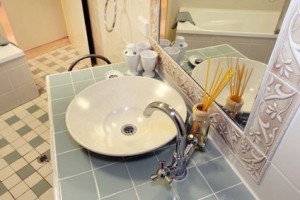Common Plumbing Issues That You May Encounter When Remodeling Your Bathroom?
Picture this nightmare. You’ve just finished installing your new tub, shower and toilet and are ready to call your plumbing inspector to OK the job. He finds six code violations forcing you to rip out your work and start over again. Don’t do this. Unless you are a professional plumber don’t’ attempt this kind of project.
Call a reputable plumbing contractor to give you a written estimate. He/she will inspect your present bathroom and check for issues that must be corrected and brought up to code.
What Issues You May Encounter?
One issue is mold. Mold grows in damp places like your shower stall or around your tub. It is dangerous to your health because it is a breeding place for bacteria. Often mold grows where there is improper ventilation. The exhaust fan may not be working properly or is not strong enough to remove the moisture from your shower area.
Poor drainage. Your toilet may not be flushing properly. You may have an old outdated model. The inside parts may be corroded or leaking. Your toilet stool has a wax seal that is old and dried out causing a leak around your toilet. In your shower some tiles may be loose letting water seep in behind them and dripping onto the studs and into your den. You shower drain may be old and doesn’t drain the way it should.
Venting. Many times the vents are rusted and frozen and do not function at all. Believe it or not, in some cases they do not even vent to the outside. Instead they vent into an upstairs attic causing a moisture buildup there.
Plumbing. Your pipes may be rusted and leaking. In some cases for older houses you may have steel pipes that clog and cannot be kept clean. Your entire plumbing may not be up to code and must be replaced.
What Local Codes Need to be Followed?
Most cities and towns have a written set of plumbing codes. Some of the common ones include:
· Right size of pipes for drains, vents and supply lines.
· The fixtures cannot be too close together.
· Right kind of pipes. For example most codes accept copper for supply lines and PVC for drains.
· Special drain fittings and cleanouts.
· Drain slope. Usually ¼ inch per foot.
· Use of purple primer for PVC pipes.
· Trap sizes and sizes of flexible supply lines.
· Pipe fittings between different kinds of pipes-e.g. galvanized to copper
· Valves and cleanouts
 · Trap sizes
· Trap sizes
· Valves, clean outs and compression pipe- fittings cannot be covered over by wall or floor. They should have an easy access panel
When Should I Replace Your Shower or Tub?
If you are doing a remodeling, try not to skimp on replacement parts. Instead of the old tile and tub arrangement, you might want to consider a new, modern, one- piece plastic tub and shower with energy saving fixtures.
The same is true for your toilet. You may want the newer energy saving toilet. They use only one gallon of water for flushing instead of the old three- gallon flush. You can also purchase a two- lever flush- one for waste and the other for liquids. Over time you will be able to recoup some of your cost in water savings.
Are you looking to remodel your Bellingham bathroom? Wait no more, and Call Eagle Plumbing and Heating at (360) 318-9999 to see if your bathroom needs a new fresh look.



